All products featured are independently chosen by us. However, SoundGuys may receive a commission on orders placed through its retail links. See our ethics statement.
Bose QuietComfort Earbuds vs. Samsung Galaxy Buds Pro
February 26, 2021
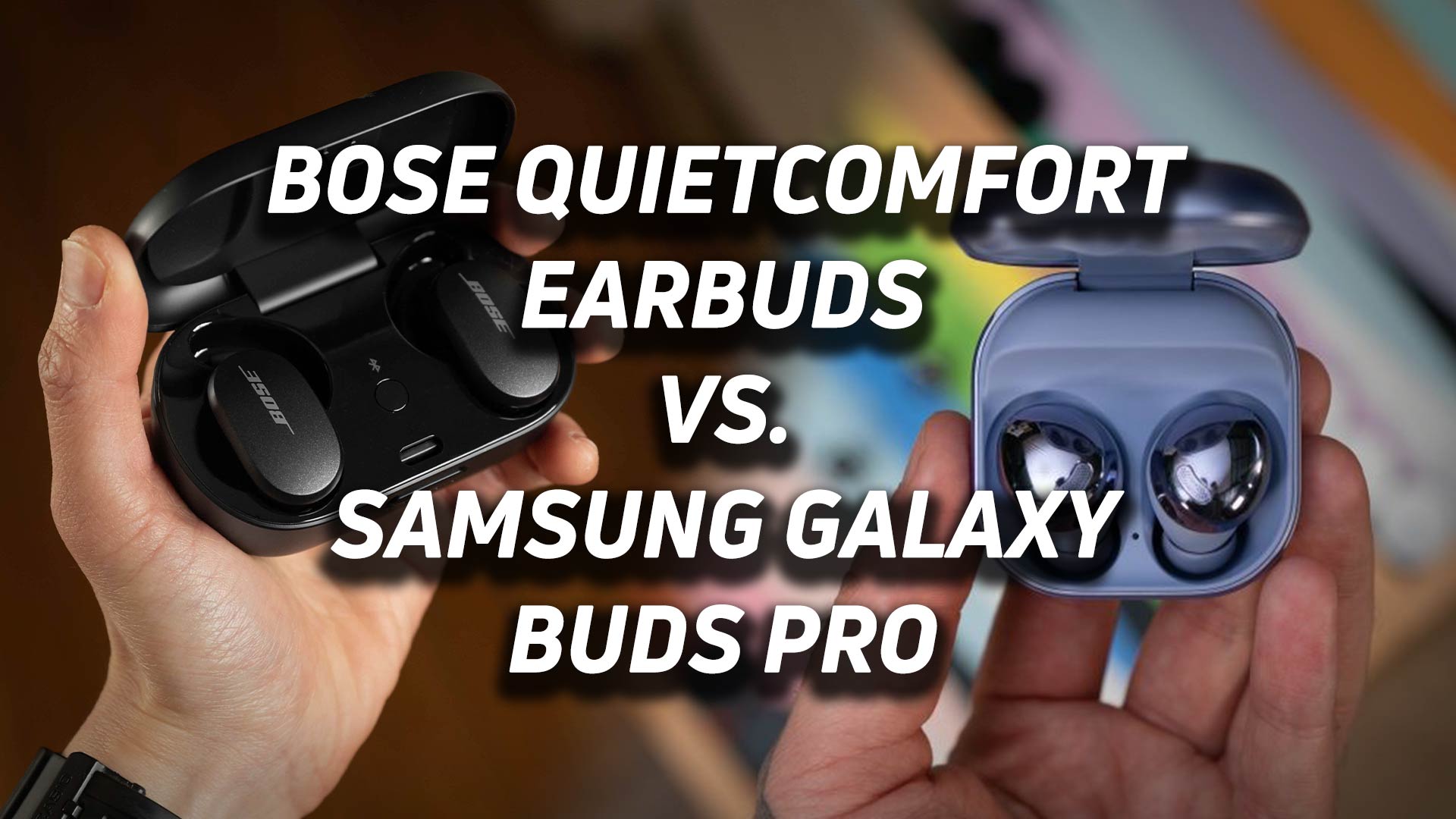
Samsung and Bose are tech titans, and both are vying for your attention with their noise canceling true wireless earbuds. The Samsung Galaxy Buds Pro features an eye-catching yet ergonomic design, which contrasts the Bose QuietComfort Earbuds more mature look. There’s more than what meets the eye with both sets of earphones. Let’s dive below the surface, and see which pair of premium ANC earbuds is best for you.
Samsung Galaxy Buds Pro vs. Bose QuietComfort Earbuds: Fit and hardware
The Samsung Galaxy Buds Pro comes in three color variants: violet, black, and white. The earbuds take on a traditional design with ear tips, air vents to relieve inner-ear pressure, and rubberized interiors. In line with previous generations, the featherweight Galaxy Buds Pro are extremely comfortable to wear, and Samsung doubled down on durability by ensuring their IPX7 rating.
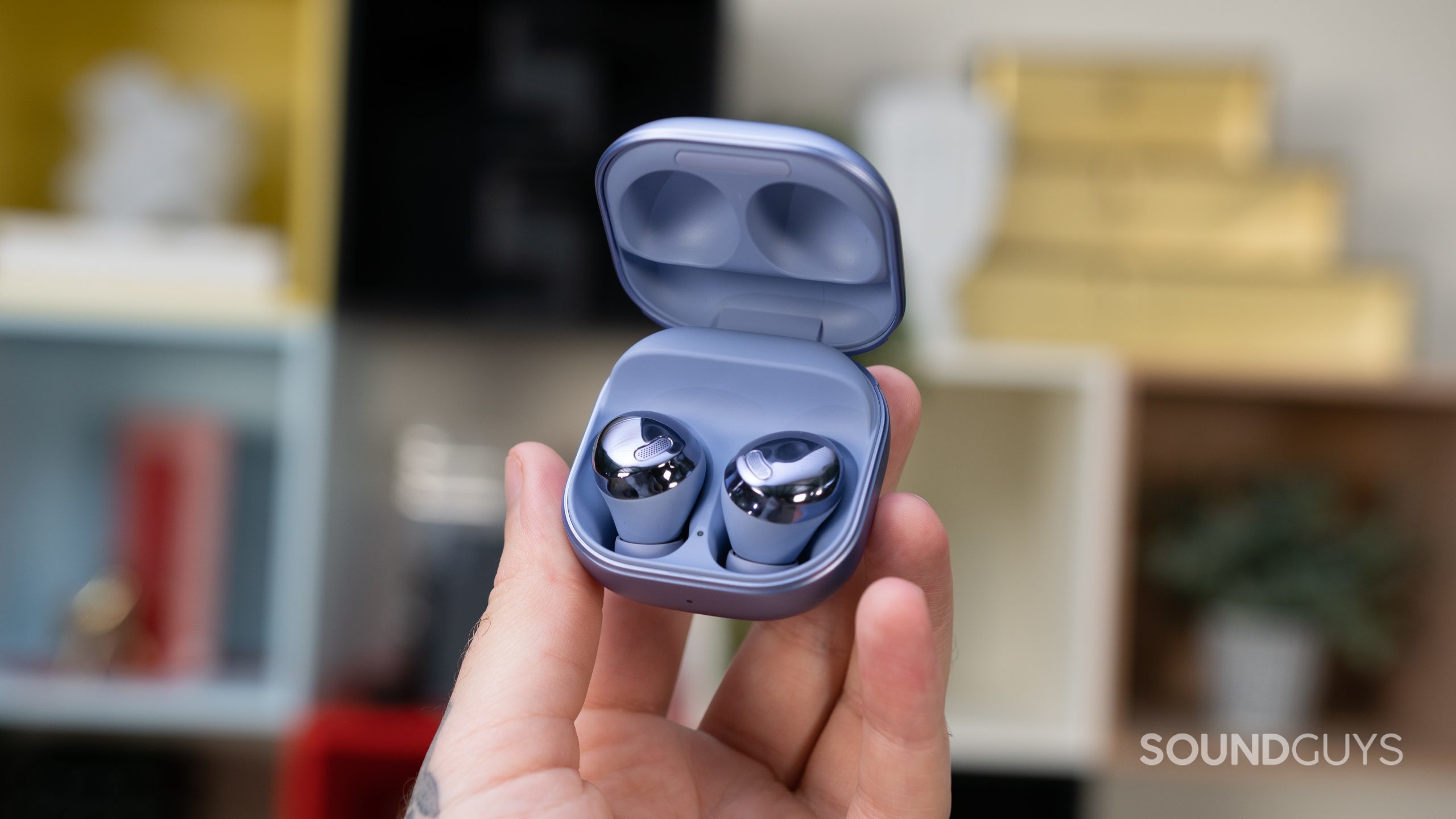
Samsung’s true wireless earbuds are adorned with reflective touch panels, so you can operate the headset without drawing for your phone. While it’s a nice addition, the sensitivity is a bit much and the buds often register unintended taps. If this becomes too annoying, you can disable the touch registration in the Galaxy Wearable app. The Galaxy Buds Pro house a slew of sensors: accelerometer, gyro, proximity, hall, touch, and a voice pickup unit (VPU). The earbuds automatically pause music when removed, and to resume you must tap either touch panel. It also auto-pauses ANC when you start talking thanks to its voice detect feature.
The Bose QuietComfort Earbuds reject the whimsy of the Galaxy Buds Pro, instead showcasing a more serious matte black or white finish. Bose’s IPX4 earbuds are significantly larger than Samsung’s and protrude more from the ear. The hybrid StayHear Max ear tips keep the earbuds in place while maintaining a comfortable fit. Bose also integrated a vent system to alleviate pressure buildup.
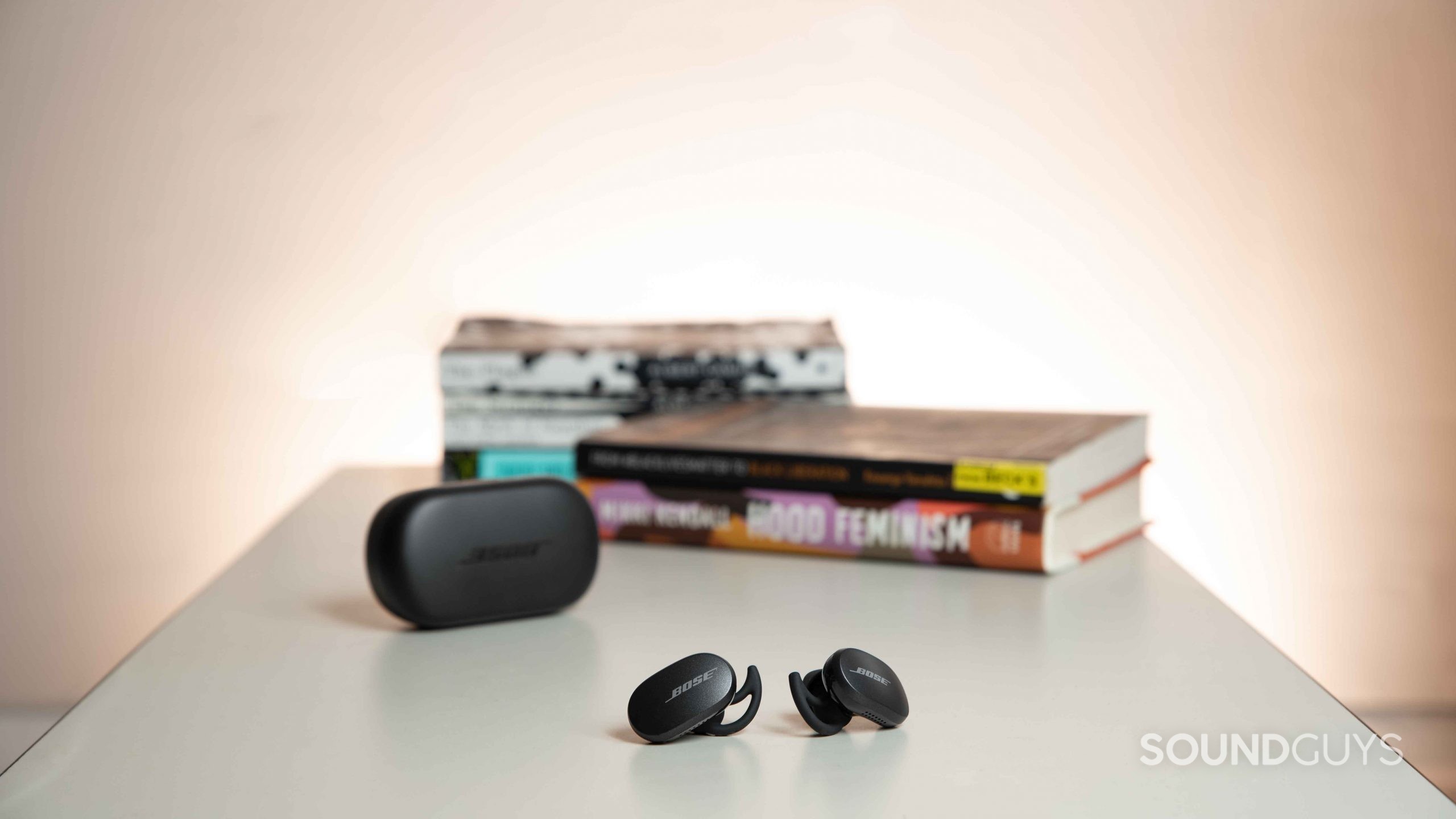
Just like Samsung’s earbuds, the Bose QC Earbuds feature touch panels where you can control media playback, volume, and phone calls. The Bose touch controls offer just the right amount of sensitivity, something we also appreciate from the Bose Noise Canceling Headphones 700 touch panel. Bose’s earbuds house proximity sensors for automatic play/pause functionality but lack much of the fancier tech packed into the Galaxy Buds Pro.
You have more ANC adjustment options with the Bose QuietComfort Earbuds than with the Galaxy Buds Pro.
Both charging cases use the USB-C connection, and support Qi wireless charging. Samsung’s case also charges via Wireless PowerShare, which is limited to specific Samsung Galaxy devices. The Galaxy Buds Pro case is compact and identical to the Galaxy Buds Live case, save for the colorways. Bose’s case is arguably more secure though, because you have to press a button to release the lid.
Bose QuietComfort Earbuds vs Samsung Galaxy Buds Pro: Bluetooth connection
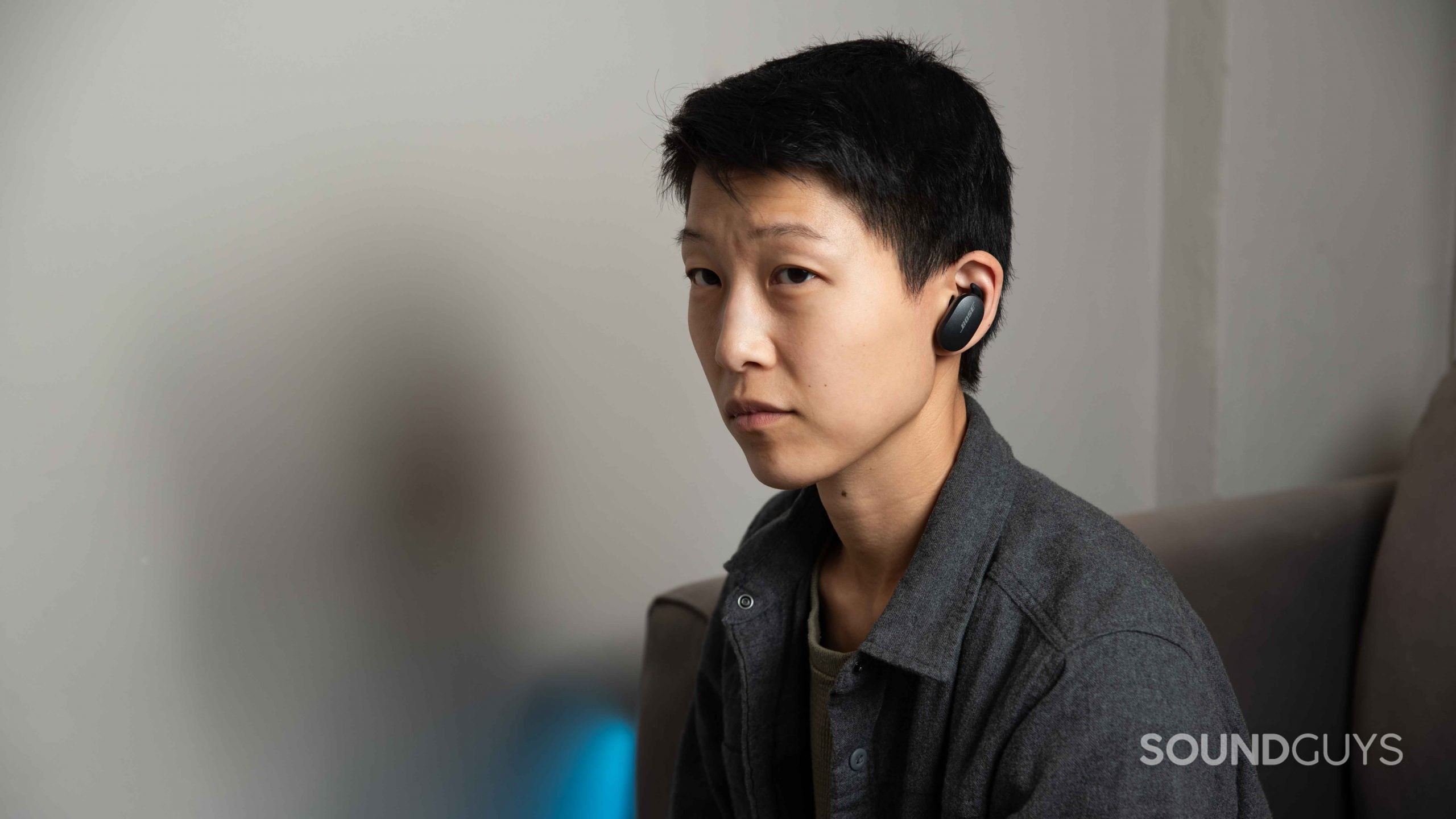
The Bose QC Earbuds use Bluetooth 5.1, which is slightly more advanced than the Bluetooth 5.0 firmware running the Galaxy Buds Pro. The main difference between the firmware versions has to do with directionality data. Bluetooth 5.1 makes it easier for your smartphone to understand the precise location and direction of your earbuds. You also get a slight efficiency boost between Bluetooth 5.1 and 5.0, which accounts for the QC Earbuds’ more impressive battery life.
No matter which headset you purchase, both will connect and reconnect to your smartphone quickly. Both true wireless headsets support SBC and AAC streaming, with Samsung smartphones benefiting from the Samsung Scalable Codec found in with the Galaxy Buds Pro. The proprietary codec optimizes audio quality and connection stability, by making constant adjustments to balance the two.
Learn more: Understanding Bluetooth codecs
Neither pair of true wireless earbuds supports Bluetooth multipoint, but Samsung has a trick up its sleeve: automatic device switching works within the Samsung Galaxy ecosystem. So long as all of your Samsung Galaxy devices are registered under the same Samsung account, the earbuds will automatically detect and switch to the most recent device for audio output. This is exactly how the AirPods automatic switching works. In order to switch between devices with the Bose earbuds, you need the Bose Music app.
The Samsung Galaxy Buds Pro have more software features, but iOS and Android phones can use Bose’s app
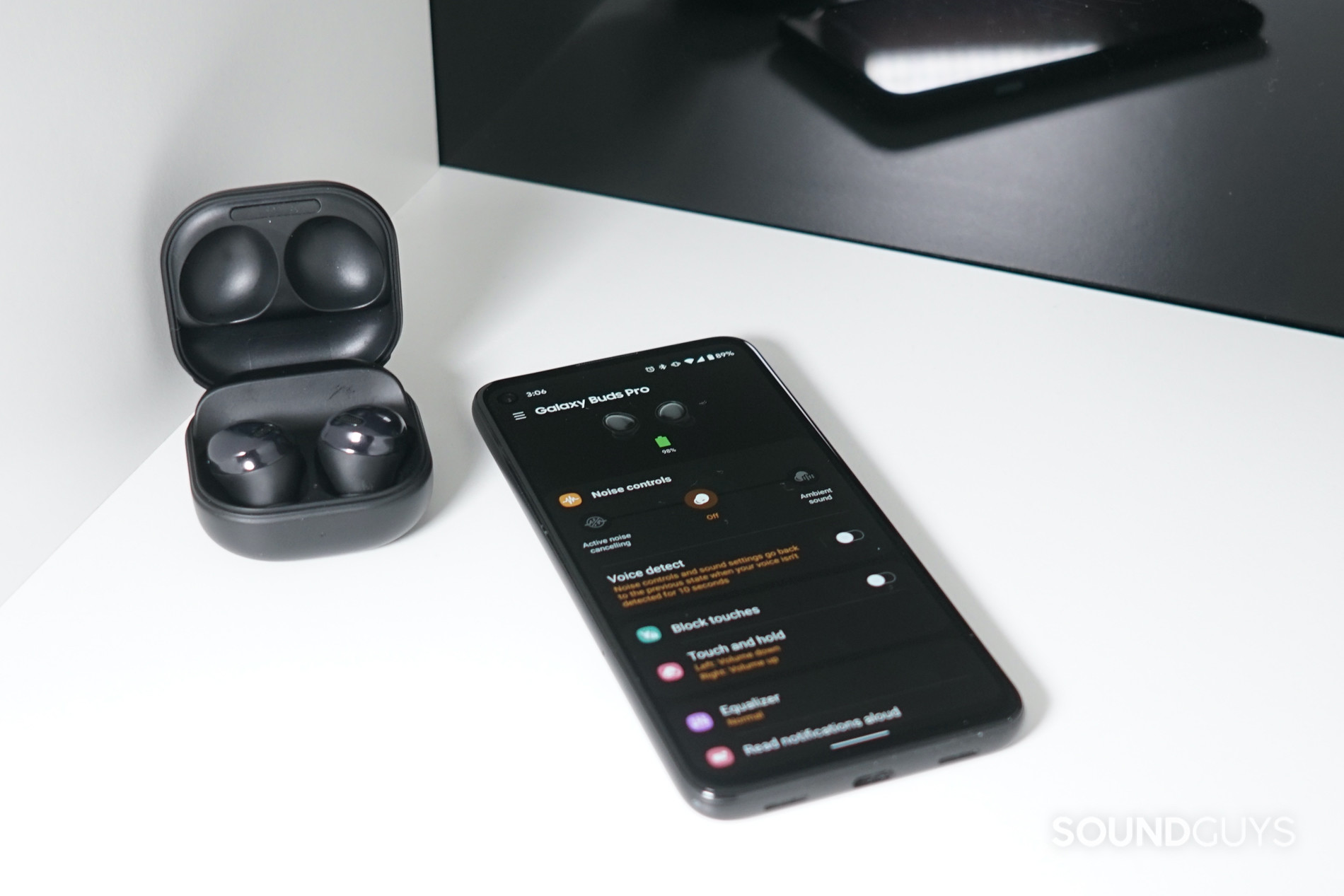
The Samsung Galaxy Wearable app is available on Android, and supports a host of features like cycling through noise canceling modes, voice detection for Bixby voice access, configurable touch controls, preset EQ options, and more. The Apple App store’s Galaxy Buds app doesn’t support the Galaxy Buds Pro, but compatibility might come in a future update.
The Samsung Galaxy Buds Pro is the first headset to support Samsung 360 Audio, which is akin to the Apple AirPods’ Spatial Audio feature. Samsung 360 Audio is yet another surround sound standard that takes head tracking and verticality into account for audio processing. Its functionality is limited, as you can only use it with specific Samsung Galaxy devices and content that supports Dolby Atmos.
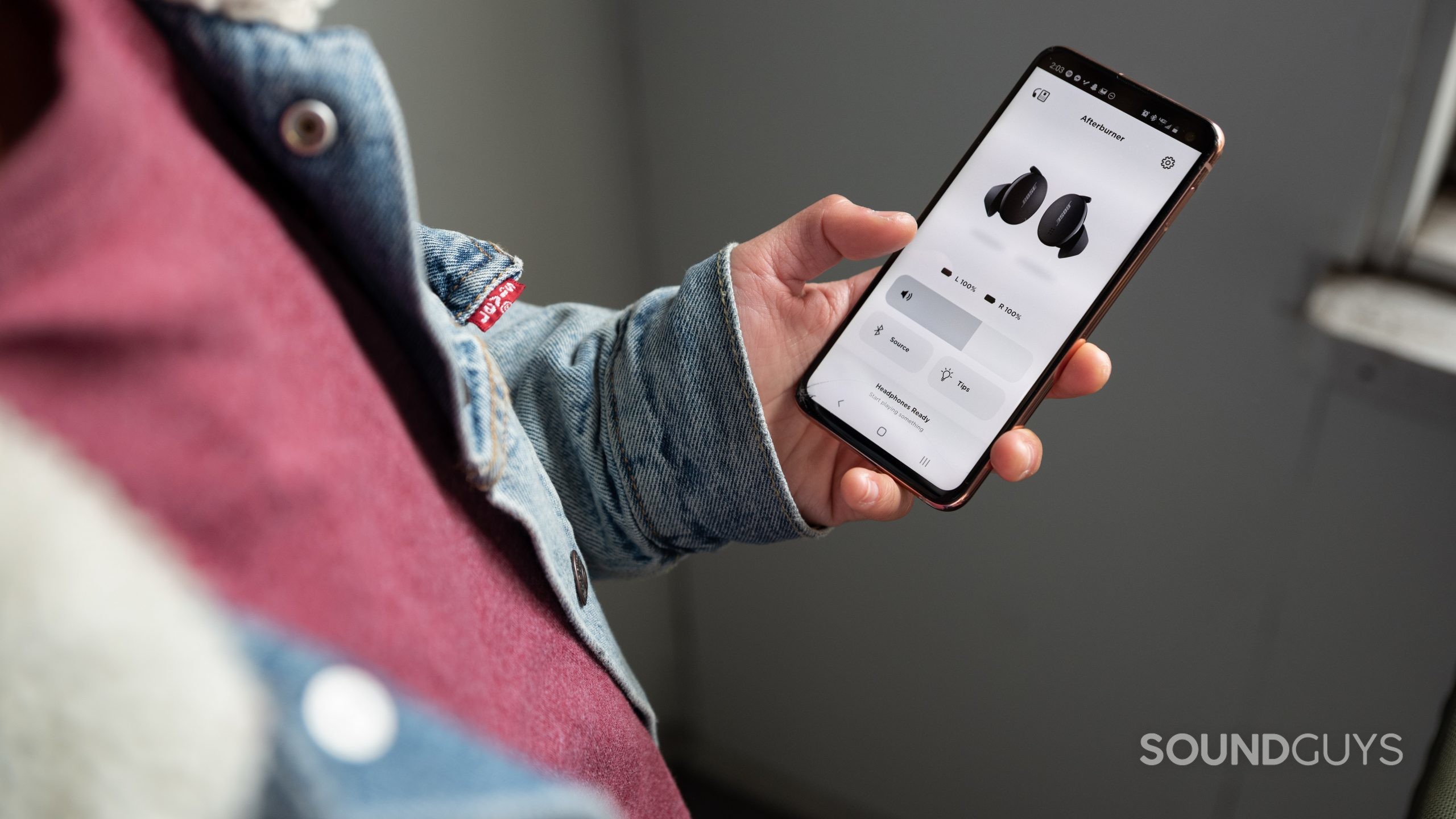
You can download the Bose Music app on iOS or Android, and the experience is identical from either operating system. The Music app lets you remap the controls, adjust ANC and ambient passthrough intensity, and switch between source devices. Unfortunately, Bose doesn’t include a way to customize the sound, but the company eventually added this functionality to the Bose Headphones 700, so it may add this for the QC Earbuds down the road.
Instead of an EQ module, Bose relies on its Active EQ technology which adjusts the frequency response in real time according to your environment. Specifically, the earbuds alter the bass and treble response on the fly. Both Bose mobile apps allow you to update the firmware of their respective headsets, which is one of the most important features for product longevity.
Go with Bose for better battery life
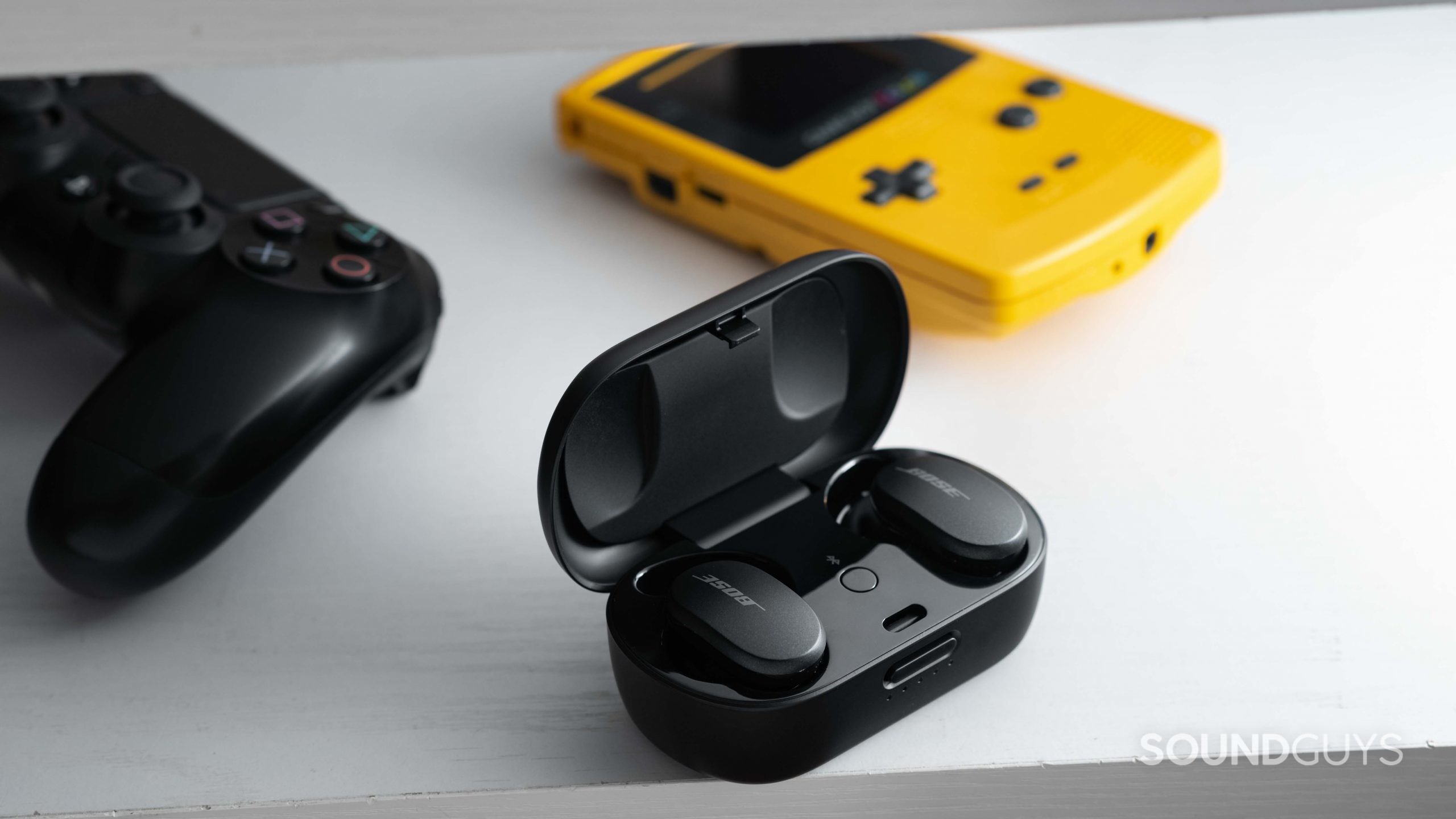
The Bose QuietComfort Earbuds last 5 hours, 29 minutes on a single charge with ANC enabled, which outpaces the 4 hours, 48 minutes we squeezed from the Samsung Galaxy Buds Pro with ANC on. We arrived at these measurements by subjecting each pair of true wireless earbuds to a constant 75dB output until the batteries depleted. To Samsung’s credit, both headsets are above average when it comes to this headset breed’s battery life.
Bose’s case provides an additional 12 hours of reserve power, and supports USB-C and wireless charging. The case can also fast charge the earbuds; when you place the QC Earbuds in the case for 15 minutes, you’re rewarded with two hours of playback time. The Samsung Galaxy Buds Pro case provides 13 hours of additional playtime, and supports Qi Wireless and Wireless PowerShare charging. You can fast charge the Galaxy Buds Pro: 10 minutes in the case yields 85 minutes of playtime.
Which headset has better noise canceling?
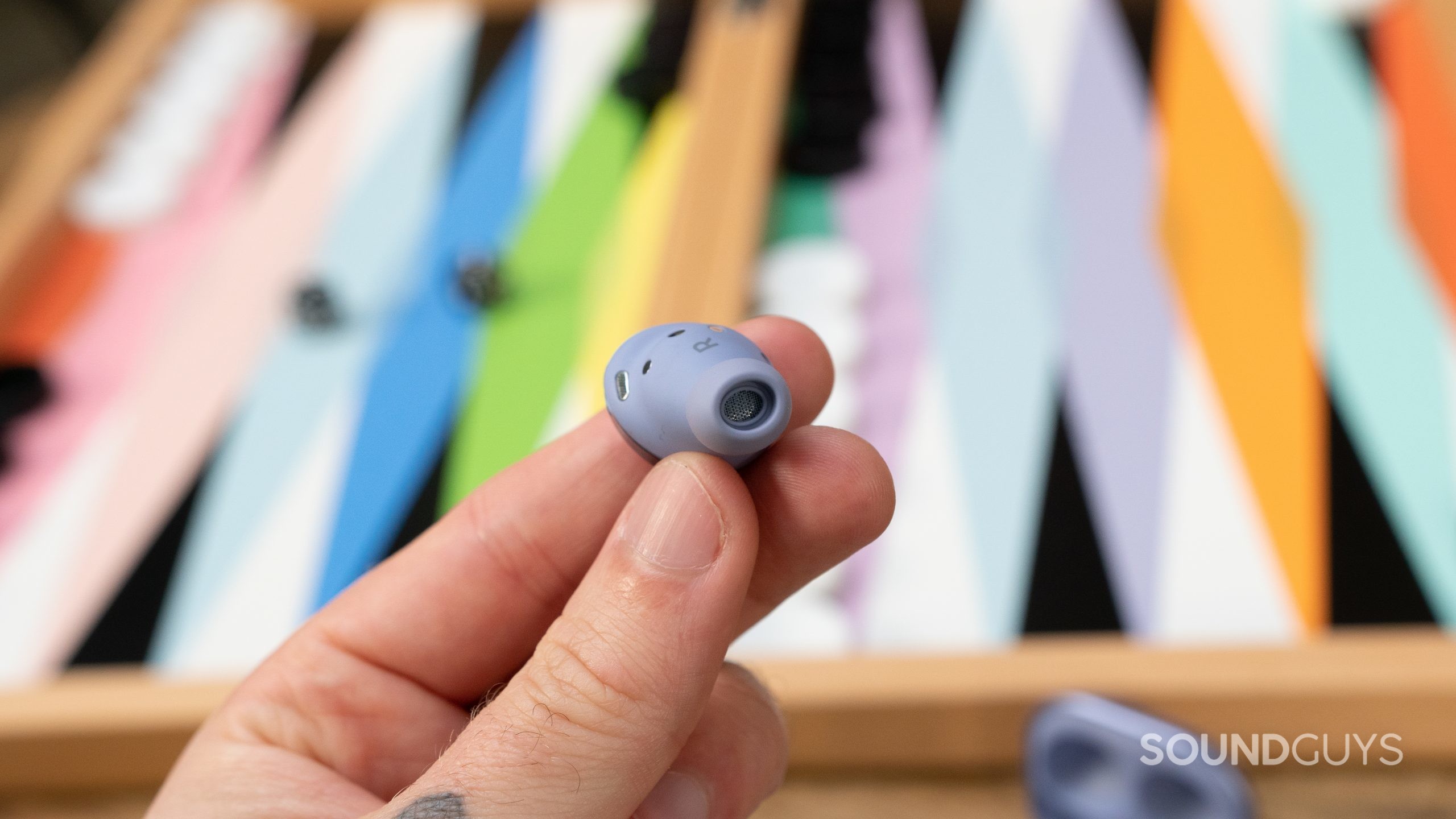
Both the Samsung Galaxy Buds Pro and Bose QuietComfort Earbuds feature very good noise canceling. No matter how you travel, Bose and Samsung will make sure your journey is a quiet one. All you have to do is find the proper fit with the included ear tips.
Noise canceling technology works best to combat low-frequency, predictable sounds—think of the whir from your microwave or the unending roar of a jet engine. However, ANC can’t reduce high-frequency noise with the same success. These higher pitched noises are often referred to as incidental noise (the sharp inhale of a nearby laugh or the clang of two metal pots). The Samsung Galaxy Buds Pro ear tips create a more complete seal to the ear canals, so they offer better passive isolation than the QC Earbuds.
Don’t miss: Best noise canceling true wireless earphones
Hold up! Something’s missing:
This section is typically where we display a noise canceling chart to show you exactly where the ANC shines and where its deficiencies lie. Unfortunately, we’ve hit a technical snag in our testing. To combat this, we’ve purchased a Bruel & Kjaer 5128 test fixture (and the appropriate support equipment) to update our testing and data collection. It will take a bit to get it up and running in Canada, but we will update this article (and many others!) once we’re able with improved sound quality measurements and ANC performance plots. These will be made obvious by an announcement explaining the change, and a new chart aesthetic.
Thank you for bearing with us, and we hope to see you again once we’ve sorted everything out.
The Samsung Galaxy Buds Pro have more accurate sound quality
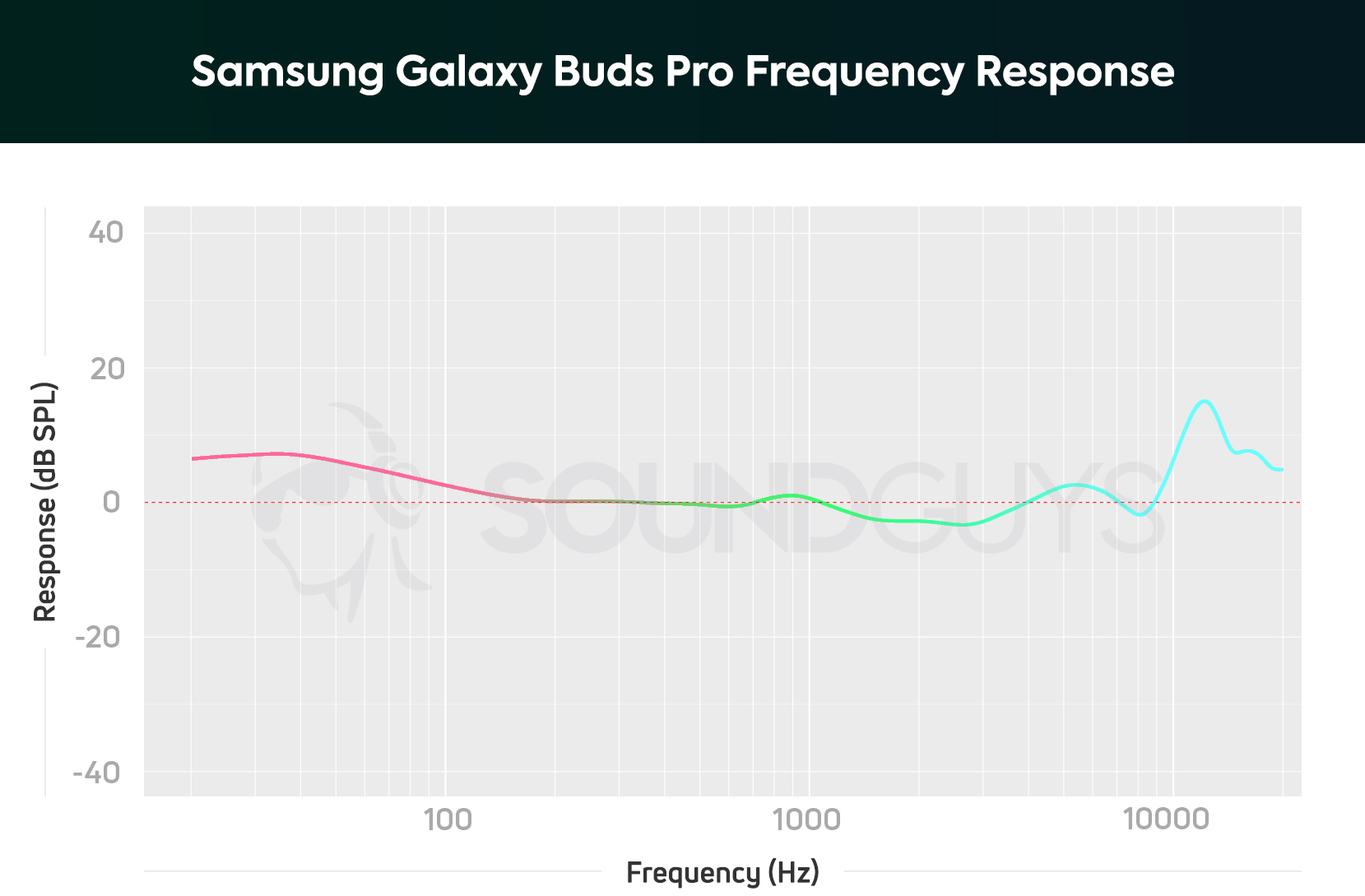
The Samsung Galaxy Buds Pro have the more accurate frequency response, but this is just part of the picture. While Samsung’s frequency response isn’t neutral by any means, it’s far less emphasized than Bose’s. The bass and midrange frequency response closely follow the Harman target curve, which makes sense seeing how the Samsung owns Harman Audio (along with AKG and JBL). This kind of sound profile ensures bass notes have just enough oomph to make music engaging, without entering into overt auditory masking territory.
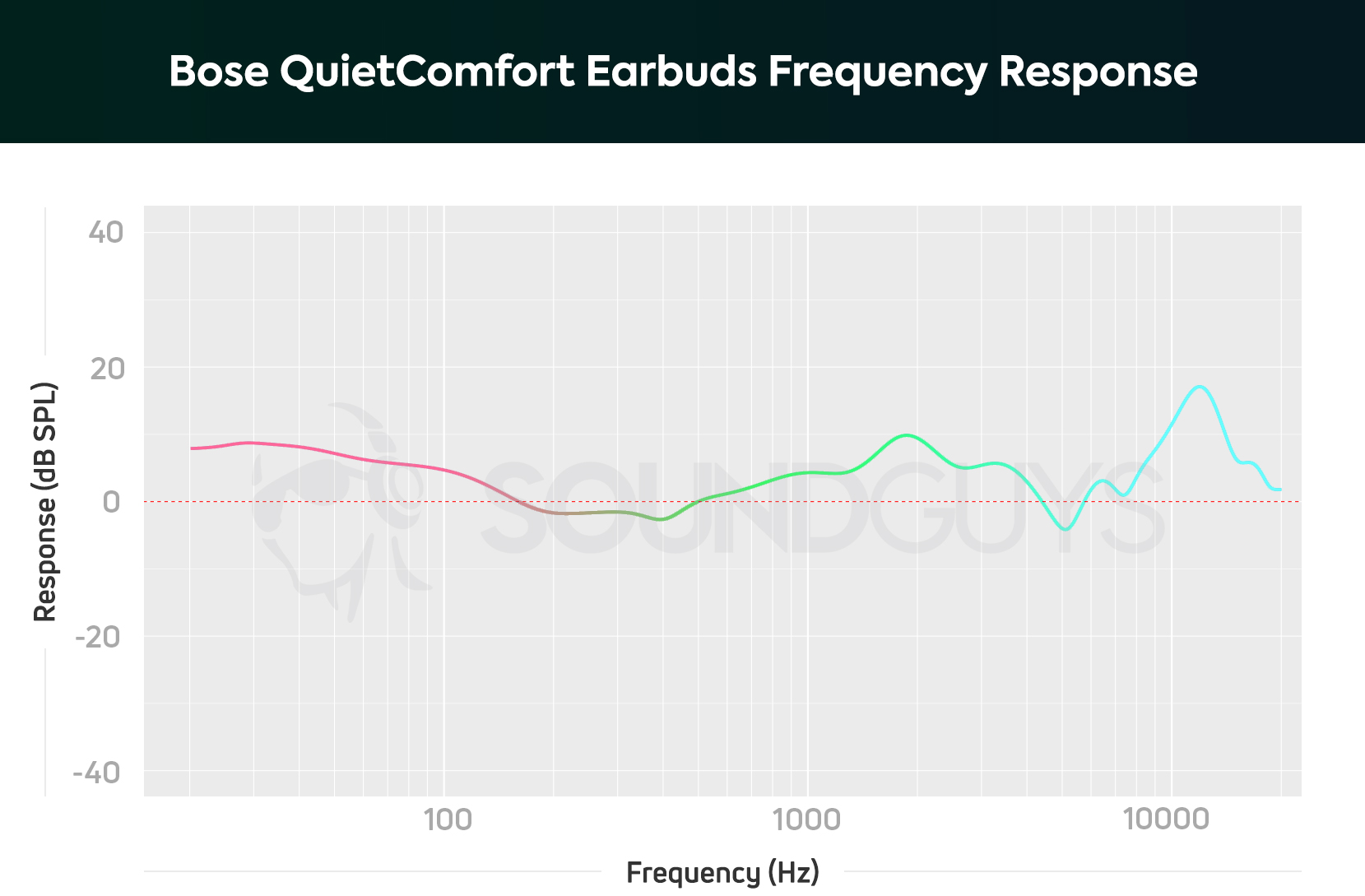
Bose’s frequency response for the QuietComfort Earbuds is unashamedly consumer-oriented with amplified bass, upper-midrange, and treble notes. This selective emphasis delivers a familiar sound to listeners, and one that mimics most headset sound profiles. Hopefully you like how the QC Earbuds sound, because you can’t adjust it in the Bose app. Bass notes sound two times louder than low-mids, which is where most vocal frequencies fall. Bose’s engineers were smart about tuning the QC Earbuds though: the upper-midrange emphasis makes it easier to hear harmonic notes, which is where resonances from string instruments (“detail”) are heard.
You might like: Best studio headphones
Both headsets are great for casual listening, but the Samsung Galaxy Buds Pro are more technically accurate. Plus, you can choose from a handful of EQ presets in the Galaxy Wearable app, if you don’t like the default frequency response.
Are the Bose QC Earbuds or Samsung Galaxy Buds Pro better for phone calls?
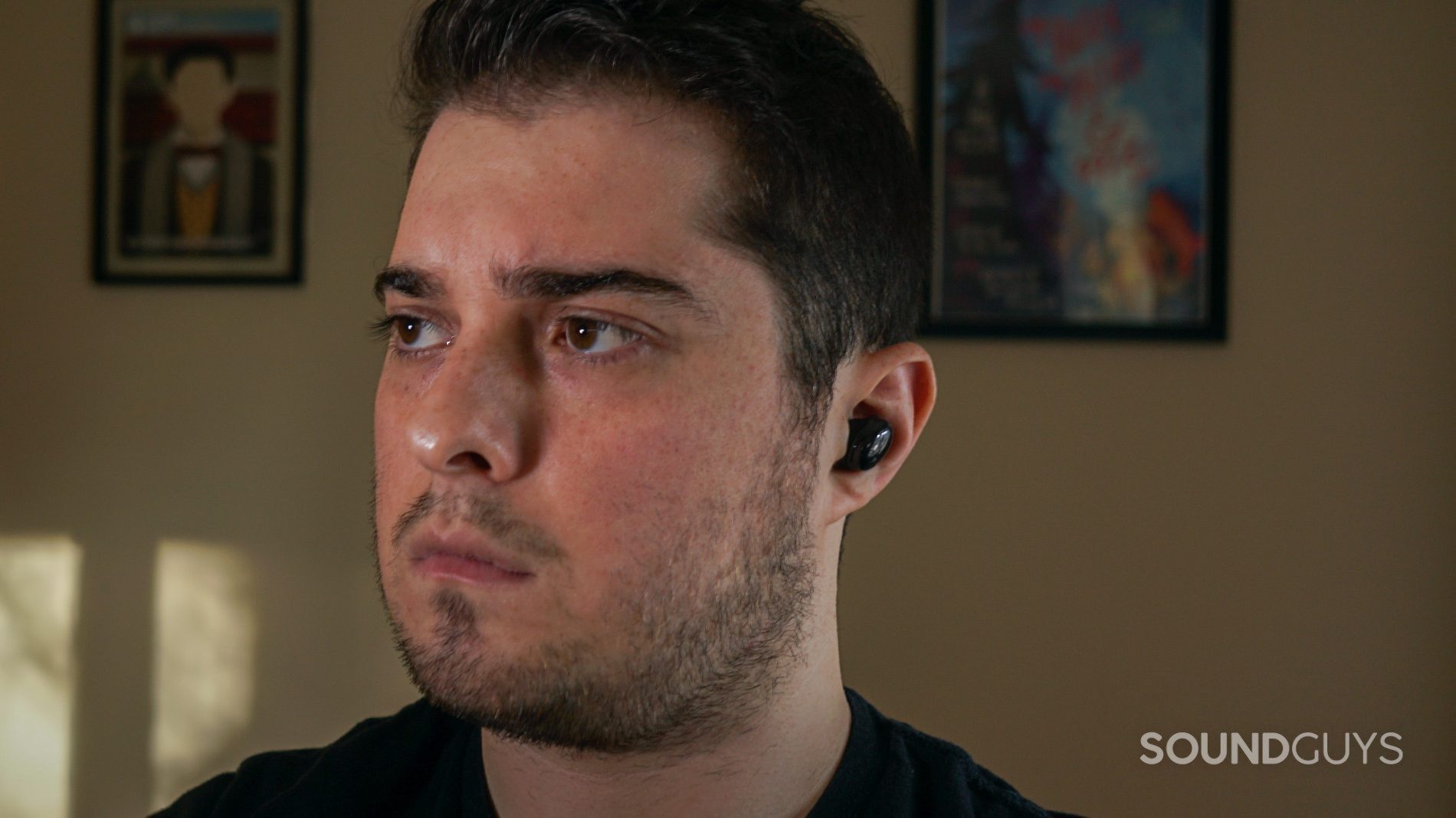
The Samsung Galaxy Buds Pro has the best embedded microphone system to date among the Galaxy Buds line. Samsung kicked it up a notch, and even included mesh hardware to reduce wind noise. Bose’s microphone system is great too, and speech intelligibility is not a problem. When speaking with the Bose headset, you may encounter more audio clipping at loud volumes, but it does a very good job canceling predictable background noises.
Both headsets support mono playback, and therefore mono calls, but only Samsung lets you use either earbud in mono mode. Bose’s headset limits you to the right earbud in mono mode, which may exclude a segment of the hearing-impaired population.
Take a few seconds to listen to our microphone samples below and help other readers decide which sounds better.
Bose QuietComfort Earbuds microphone demo:
Samsung Galaxy Buds Pro microphone demo:
Which microphone do you think sound better?
Should you buy the Bose QuietComfort Earbuds or Samsung Galaxy Buds Pro?
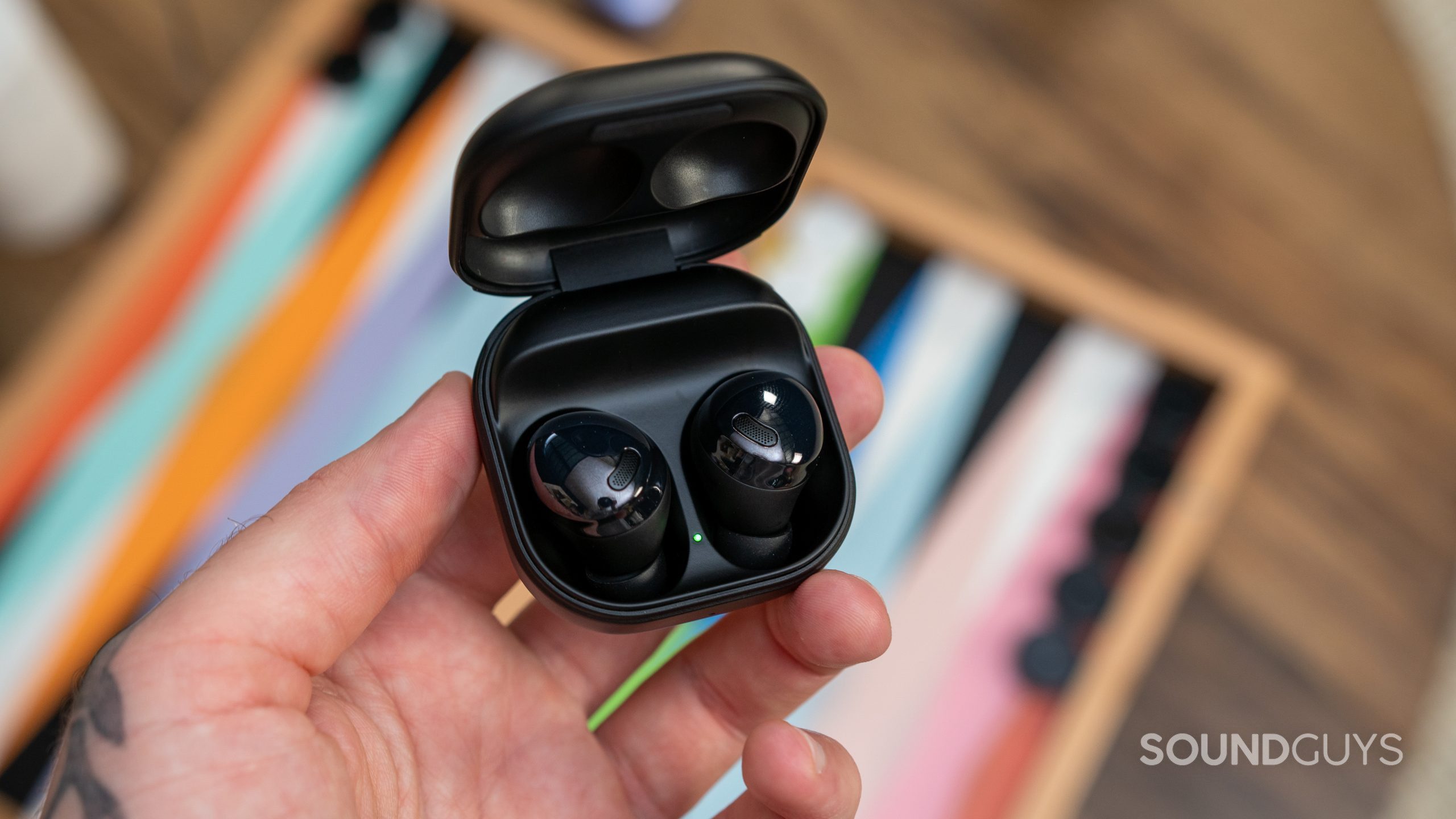
The final piece of this versus puzzle is cost. The Bose QuietComfort Earbuds are significantly more expensive than the Samsung Galaxy Buds Pro. Bose’s earphones retail for $279 USD, which is a heck of a lot more than the $199 USD Galaxy Buds Pro. Due to the more reasonable price and diminutive size, the Galaxy Buds Pro is the better all-around headset for most listeners.
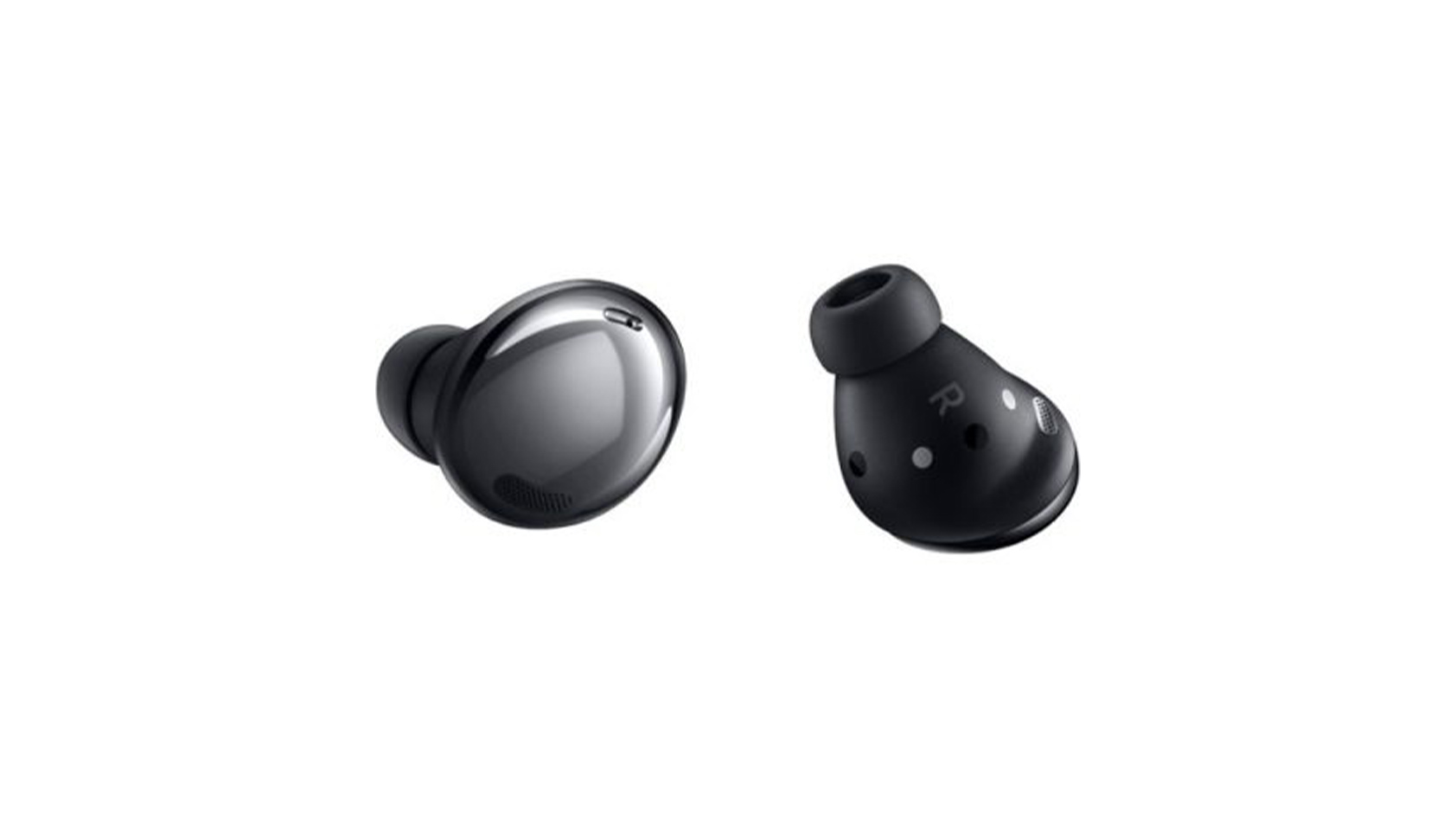
Now, the Bose QuietComfort Earbuds are no slouch, and these are some of the best buds you can buy. Bose knows its market and tuned its earphones accordingly. The QC Earbuds are made for the traveler who needs an elegant, effective solution to their nomadic woes. The microphone system lets you take calls on the go, and the water-resistance makes them durable enough for an unplanned workout.
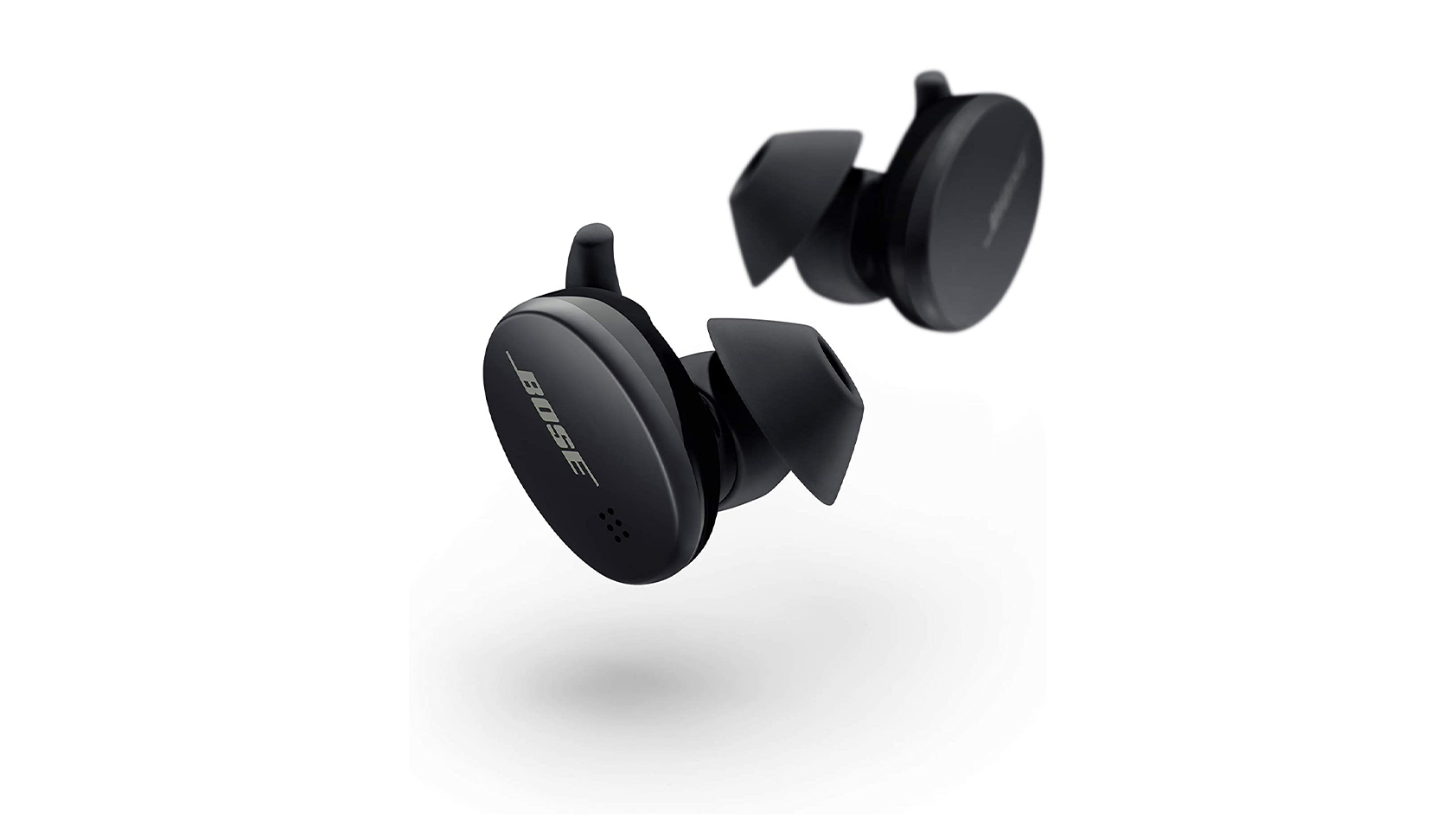
If you want a pair of ANC earbuds with the most secure fit that money can buy, you’ll have a hard time finding something better than the Bose QuietComfort Earbuds. If you just want something extra portable with a few customization options, the Galaxy Buds Pro is a solid deal.
Consider these alternative true wireless earbuds instead
If you like what the Galaxy Buds Pro has to offer but don’t see the need for noise canceling, consider the Samsung Galaxy Buds Plus. These earphones have among the best standalone battery life of any true wireless earbuds we’ve tested, lasting well over 11 hours. They’re not nearly as water-resistant, but can survive most of your workouts. Microphone quality is still quite good, and comfort is excellent.
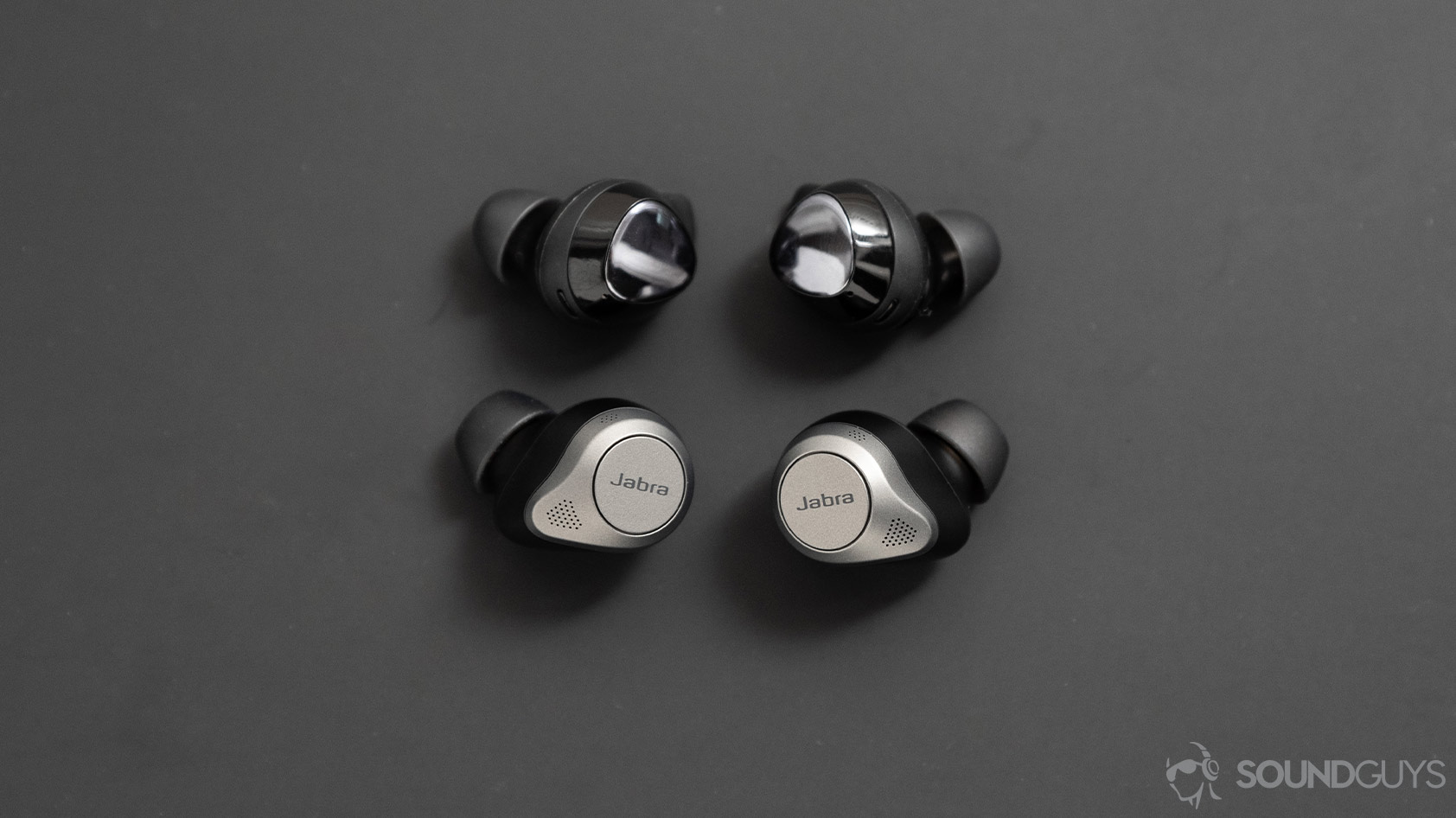
On the other hand, Bose released a non-noise canceling pair of true wireless earbuds alongside the QC Earbuds. The Bose Sport Earbuds are a great option for listeners who want a secure fit without all of the bulk and expense tacked on when ANC tech is thrown into the mix. These earphones use the same Active EQ tech, and are IPX4-rated. They’re significantly smaller than the QuietComfort Earbuds too.